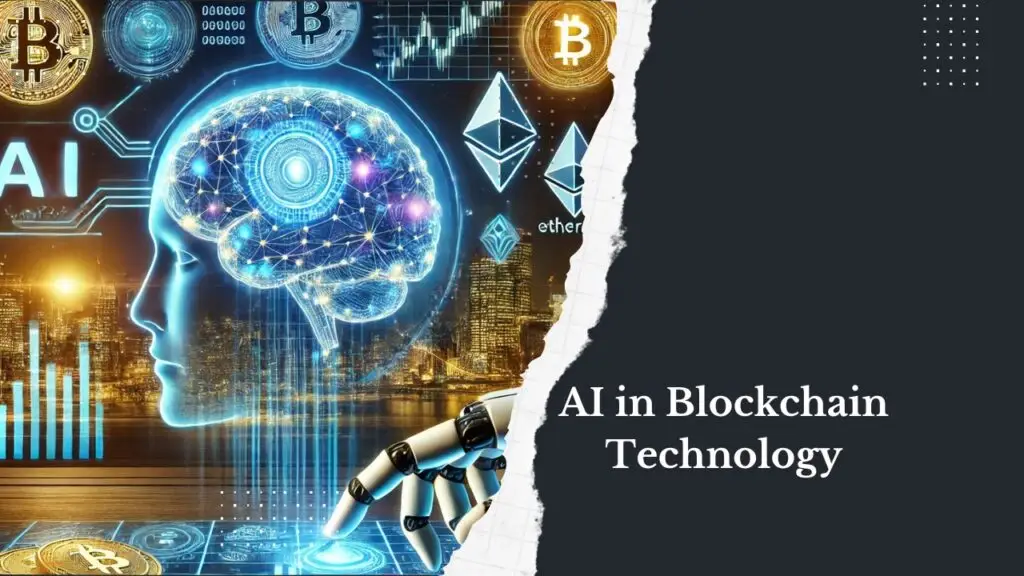Introduction
The world of cryptocurrency is evolving rapidly, and at the heart of this transformation lies a groundbreaking innovation: AI-powered mobile mining. While most blockchain projects rely on energy-intensive mining rigs or complex algorithms, Pi Network takes a radically different approach. By leveraging the power of everyday smartphones and integrating forward-thinking AI principles, Pi Network is not just democratizing crypto—it is redefining what decentralized technology can achieve. In this article, we will explore how Pi Network is bridging the gap between AI and mobile mining, why this matters for the future of crypto, and what it means for everyday users.
What is AI-powered mobile mining?
Traditional crypto mining, like Bitcoin’s power-consuming Proof-of-Work, is inaccessible to most. AI-powered mobile mining reimagines this process by optimizing tasks for smartphones. Think of it as a smarter way to participate in blockchain networks, one that does not drain batteries or require expensive hardware.
Pi Network’s AI-powered mobile mining is pioneering this space. Unlike AI-powered tokens (e.g., Fetch.ai or SingularityNET), Pi does not position itself as an AI project. Instead, it uses AI principles to enhance accessibility and efficiency. Here’s how:
- Energy Efficiency:
Pi’s consensus algorithm, the Stellar Consensus Protocol (SCP), is inherently lightweight. AI could further optimize how devices contribute to the network, prioritizing low-energy tasks for mobile users. - Fraud Detection:
Machine learning algorithms could analyze mining behavior in real time, flagging fake accounts or bots trying to exploit the system. This ensures fair rewards for genuine participants. - Personalized Rewards:
Imagine AI tailoring mining rewards based on user engagement, location, or network contributions. Pi already uses a “security circle” system—AI could refine this to incentivize growth.
This synergy enables millions of users to mine Pi coins effortlessly on smartphones—no expensive hardware or technical expertise is required.
Pi Network’s Unique Approach: Mobile Mining Meets AI Potential
Pi Network’s AI-powered mobile mining mission is to make crypto mining accessible to anyone with a smartphone. Over 55 million users (“Pioneers”) have joined its ecosystem, mining Pi coins with a simple tap. But how does AI fit into this? Let’s break it down:
1. Decentralized AI Training on Mobile Devices
While Pi isn’t an AI project, its mobile-first network could support decentralized AI initiatives. For example:
- Federated Learning:
Your phone could train small parts of an AI model using local data (e.g., typing habits for better keyboards) without compromising privacy. Pi’s network might reward users with coins for contributing computational resources. - Case Study: Google’s Gboard uses federated learning to improve suggestions. Pi could adopt a similar model, turning millions of phones into a collaborative AI training hub.
2. AI-Driven Security Enhancements
Pi’s growth makes it a target for bad actors. Here’s where AI could play a role:
- Behavioral Analysis:
Machine learning could detect unusual mining patterns (e.g., sudden spikes in fake accounts) and automatically adjust security protocols. - Example: PayPal uses AI to flag fraudulent transactions. Pi could implement analogous systems to protect its ecosystem.
3. Sustainable Mining Through AI Optimization
Bitcoin’s energy consumption is infamous. Pi’s SCP protocol is greener, but AI could make it even more efficient:
- Dynamic Resource Allocation:
AI could allocate mining tasks based on a phone’s battery level, processing power, or network connectivity. - Case Study: Helium Network uses IoT devices to build decentralized wireless networks. Pi’s AI-powered mobile mining could mimic this by using AI to manage device contributions.
Real-World Applications of AI in Cryptocurrency Mining
Case Study: Fetch.ai
Fetch.ai is an example of an AI-driven crypto project that automates business tasks through decentralized machine learning networks. It aims to create intelligent agents capable of performing complex tasks like optimizing logistics and managing energy consumption.
This aligns with Pi Network’s goal of using AI to enhance user experience and operational efficiency within its ecosystem.
Case Study: Bittensor
Bittensor leverages a blockchain-based machine-learning network that allows miners to earn rewards for contributing computational resources to train neural networks. This innovative approach highlights how integrating AI with blockchain technology can create new economic models for miners.
Similarly, Pi Network’s model encourages users to contribute to network security while earning rewards through mobile mining.
The Future: Pi Network as a Gateway to AI-Crypto Synergy
Pi Network’s true potential lies in its ability to merge mobile mining with AI-driven opportunities. Here’s what the future might hold:
1. AI-Powered DApps on Pi’s Ecosystem
As Pi launches its Mainnet and smart contracts, developers could build decentralized apps (DApps) that integrate AI. For instance:
- Decentralized Data Marketplaces:
Users could sell anonymized data (e.g., fitness stats) to AI researchers, earning Pi coins. Projects like Ocean Protocol already do this—Pi’s mobile base could scale it. - AI Moderators for Community Governance:
Machine learning models could analyze community proposals and predict their impact, helping Pi holders make informed decisions.
2. Bridging the Digital Divide
Most AI development is concentrated in tech hubs. Pi’s global, mobile-native user base could decentralize this:
- Localized AI Solutions:
Farmers in rural areas could contribute agricultural data to train AI models for crop prediction, earning Pi in return.
3. Ethical AI Auditing via Blockchain
Pi’s transparent ledger could track the origins of AI training data, addressing ethical concerns (e.g., biased facial recognition systems).
Challenges and Criticisms
Of course, merging AI and mobile mining isn’t without hurdles:
- Device Limitations:
Older smartphones may struggle with AI tasks. Pi would need to balance inclusivity with technical demands. - Privacy Concerns:
Users might hesitate to share device resources for AI training. Transparent opt-in policies are crucial. - Regulatory Uncertainty:
Governments are still grappling with AI and crypto regulations. Pi’s decentralized nature could complicate compliance.
Conclusion
The Pi’s AI-powered mobile mining is not claiming to have all the answers. But here’s what makes it intriguing: it’s asking us to rethink what our phones can do. Imagine a world where that device you use to binge memes and stream shows could also help build a financial system that’s smarter and more inclusive. By blending smartphone simplicity with AI’s untapped potential, Pi is not just chasing the next crypto trend. It’s nudging us toward a future where tech doesn’t just serve the Silicon Valley crowd but empowers teachers, farmers, artists, or anyone with a phone and a dream.
Projects like Pi are proof that the next wave of innovation might not come from supercomputers but from the gadgets we already carry. The question is not whether our phones can change finance; it is whether we are ready to swipe right on the idea.
Please share your views in the comment below.
Disclaimer: The content provided on cryptoaianalysis.com is for informational and educational purposes only and does not constitute financial, investment, or legal advice. cryptoaianalysis.com may include discussions of AI crypto tokens and affiliate links, which help support the site. Always conduct your own research and consult a licensed financial advisor before making investment decisions. Cryptocurrency and AI token investments are highly volatile and carry significant risk. We are not liable for any financial loss incurred through the use of our content.
FAQs
-
Is Pi Network an AI cryptocurrency?
No. Pi is a mobile mining project focused on accessibility. However, its infrastructure could support AI applications in the future.
-
How does AI improve mobile mining?
AI can optimize energy use, detect fraud, and personalize rewards—making mining fairer and more efficient for smartphone users.
-
Can I mine Pi without a smartphone?
Currently, no. Pi’s model is designed for mobile accessibility, though future integrations with IoT devices are possible.
-
Will Pi Network use my data for AI training?
Pi emphasizes user privacy. Any AI integration would likely require explicit consent, similar to Apple’s differential privacy model.
-
How is Pi different from Helium or Fetch.ai?
Helium focuses on IoT networks; Fetch.ai builds AI agents. Pi is unique in prioritizing mobile mining as a gateway to decentralized participation.
-
When will Pi Coin hit major exchanges?
Pi remains in its enclosed Mainnet phase. Listing timelines depend on network maturity and regulatory compliance.
-
How does AI-powered mobile mining differ from traditional crypto mining?
Traditional mining requires costly hardware, while AI-powered mobile mining uses your phone’s idle resources, optimized by AI for efficiency.
-
Is Pi Network’s AI-powered mobile mining secure?
Yes. Pi’s AI algorithms monitor for fraud, ensuring only genuine users earn rewards.



In this contains, Question and it’s answer is useful to understand easily for anyone
Thank you for the kind words! I’m glad you enjoyed reading it.
Perfectly written subject matter, Really enjoyed looking through.
Thank you for the kind words! I’m glad you enjoyed reading it.